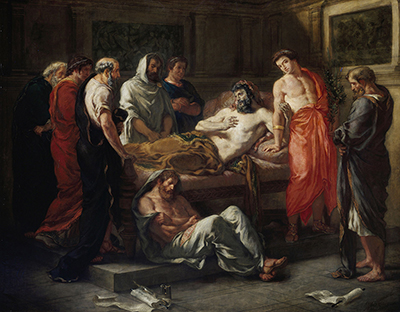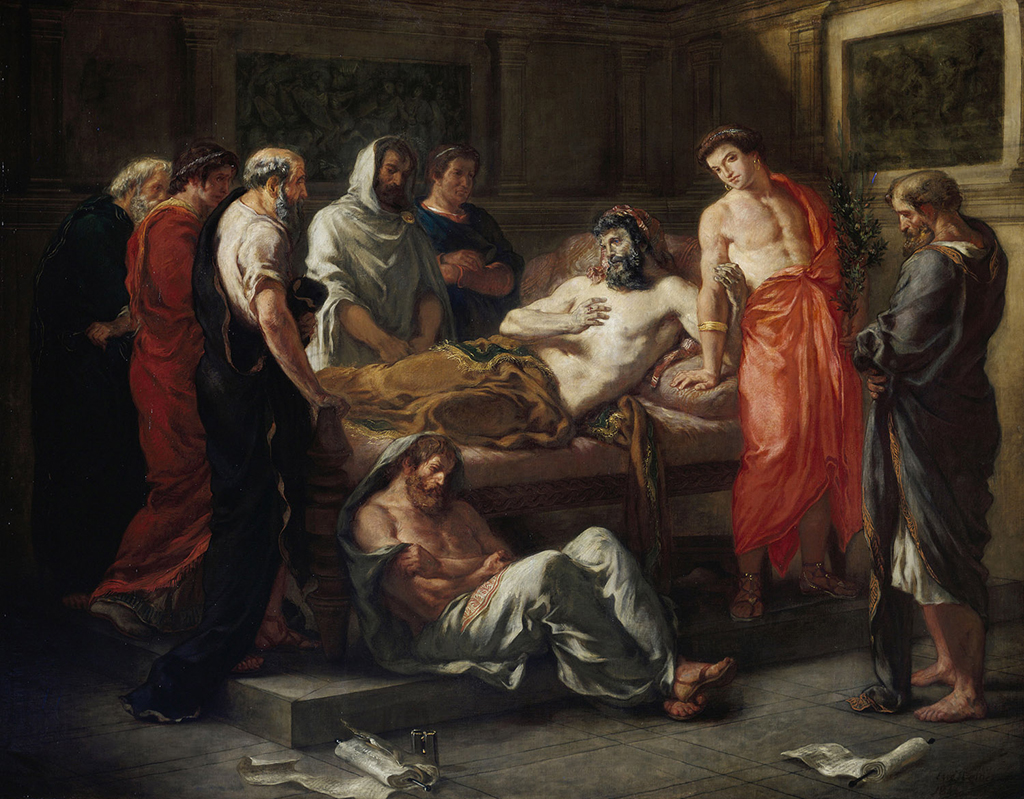This dramatic scene was completed by Eugene Delacroix in 1844 and features heavy contrasts between light and dark in order to heighten the atmosphere. It can now be found in the Museum of Fine Arts of Lyon alongside a number of detailed study sketches.
Although there are far fewer figures within this scene than with some of the artist's busier paintings, such as Death of Sardanapalus and Fanatics of Tangier, he still chose to make use of a huge canvas for it. The final piece stands nearly three and a half metres wide, making it too large for most art galleries to even be able to put on display. This decision allows Delacroix to really add great detail to each and every figure involved in the scene, with lighting, clothing and facial expressions all carefully managed across the overall composition. Delacroix did not always use such dramatic tones as this, with some comparisons being able to be drawn with the likes of Caravaggio and Rembrandt who would use high levels of darkness in order to allow the key elements of the scene to stand out even more. Our French Romanticist painter would have studied their work in his early years and was generally highly knowledgeable on art from previous centuries, be it from Italy or the Flemish regions.
This is intended as a symbolic piece to represent the end of the Roman Empire. The figure lying back in pain would be Roman Emperor Marcus Aurelius, who is approaching his death and has called in a number of people to share his final moments. He lies next to his son, Commodus, who sports a bright red toga and seems relatively unconcerned with the predicament of his father. The other gentlemen around the bed are believed to be philosphers, who look on in sadness. They are all presented as wise, well dressed middle aged men whilst the background is of a beautifully decorated room with just enough light available to see features of this location. On the floor nearest are a number of pieces of scripture and one individual who appears genuinely inconsolable by these tragic events. The idea of being surrounded by friends and family whilst upon your deathbed was a common sight across previous centuries, when medical care was not what is was today and many ailments would prove entirely untreatable at the time.
The piece remains at the Museum of Fine Arts of Lyon in France, where it has been for a number of years. They possess an extraordinary collection of art from past centuries, with a focus, understably on French art. Besides the likes of Boucher, Ingres and Géricault, there is also good coverage of notable artists from elsewhere in Europe, such as Tintoretto (Danae), El Greco and Anthony van Dyck. They also have more recent work from the 19th century, such as from the Impressionist movement and a number who followed on just after that.





